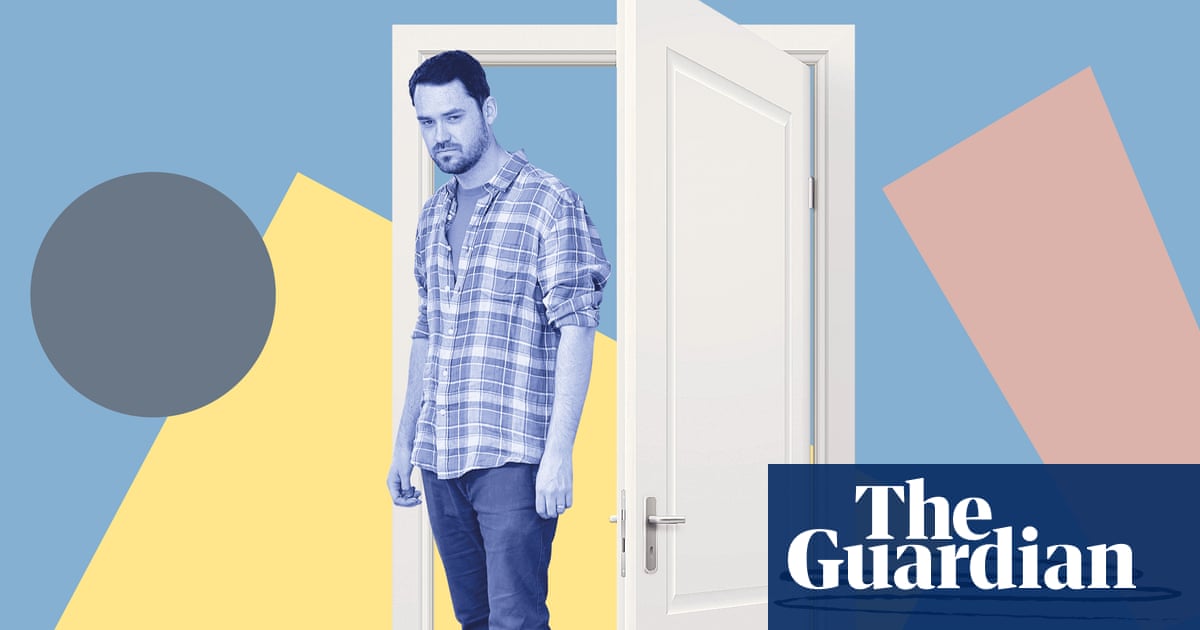
‘There used to be loads of little galleries near this studio, artist-run spaces and a few smaller commercial galleries. Pretty much all of them have gone now, priced out by spiralling rents,” says painter Cathy Lomax.
We are chatting over tea in a large, light-filled space near the Trelawney estate, Hackney, which has served as her creative base for the past 15 years. Art materials, magazines and mirrors fill every corner. The walls are lined with work from her current project, a surreal homage to late-period Elizabeth Taylor.
By any measure, Lomax is at the top of her game. She has an MA in fine art from Central Saint Martins, and is a former winner of the Contemporary British Painting prize. Her work is in demand with collectors and, until recently, she also ran a local gallery. Yet making enough to rent a studio and still enjoy life is a challenge. “My earnings fluctuate wildly, but often the cost of my studio is half my monthly income.”
She lives nearby so spends nothing on commuting, but her husband is also a freelance creative and they are both in the same boat, financially. How does she manage? “Somehow I do. Some months I earn more – it just depends. But I have no savings and I’ve never had a pension. I get occasional bits of funding, and teaching work. I love buying clothes, I love going out to eat, I love going on holiday. I’m thinking about all of those things all of the time and how to afford them.”
She is not alone. According to a survey by the London studio charity Acme last year, nearly one in three artists doubted that they would be able to continue working professionally in five years’ time, and 40% said they could not afford to have savings or contribute to a pension. Only 12% stated that they could support themselves solely from their art practice.
Lomax’s premises are run by Space Studios, which she praises for being “a brilliant and supportive organisation”. It was set up by artists Bridget Riley and Peter Sedgley in 1968 in St Katharine Docks, making it the oldest continuously operating artist studio organisation in the capital, and houses about 900 artists across London.
Eline van der Vlist, chief executive of Space, mentions that 10 of its 21 buildings are still in Hackney and Tower Hamlets, but that it is gradually being forced to move further and further out. “We have moved in a concentric circle so now we are in Redbridge and Enfield. The problem is, there are no more fringes of London for us to go to. For decades we were able to rent in light industrial buildings in places like east London’s Fish Island but now those are viewed by developers as prime real estate.”
Does location matter for artists? “To a certain extent, yes,” says Van der Vlist. “Collectors still look to London to see new work. The other day, an influential American figure asked me to show her some work by emerging artists. I doubt very much that she would have travelled to, say, Norwich.”
Working in a collective space can be particularly beneficial for young artists, but costs, particularly in London, not to mention student debt, can make it an impossibility. Emily Dixie Hill, 23, was delighted to secure a central London studio space after graduating from Camberwell College of Arts last summer. Unfortunately, six months later, all 103 artists working in the studios at Mark Lane near Tower Bridge had to leave after the property’s owners enforced a break clause on VO Curations, a non-profit studio provider.
“I was gutted when I had to move out because it felt like I was losing a community – I had made so many connections there,” says Hill. She had no choice but to begin the search again. “I was glued to my laptop for days, signing up for every studio space network.”
Hill points out that non-artists rarely understand the point of having a studio. “It’s not like we can work from an office or from home. During lockdown, my bedroom had to double as my studio. Everything stank of white spirit, and I kept bumping into wet canvas and getting paint everywhere.” Hill eventually got lucky, hearing about a space in south London from a friend. She is paying less than £100 a month for a space she shares with five other artists.
Even with such low rent, the struggle to survive as a painter is real. A large canvas can cost £75, a small tube of good quality titanium white oil paint about £10. “Then there’s the stretcher bars, and the occasional Uber to transport things to the studio. I will need to find a job as a barista or something. It definitely isn’t feasible for me to only have an income as an artist, which would be the dream,” says Hill.
It’s a very different environment for creatives now than it was when Young British Artists (YBAs), including Damien Hirst, Tracey Emin and Sarah Lucas, first emerged 30 years ago. Back then, the writer Peter Carty had a ringside seat on their antics, sharing an office as he did with a now defunct art magazine on Shoreditch High Street. He has just published his debut novel, Art, loosely based on the characters and milieu of the time. “Property was cheap for artists then,” he says, “not only because no one else wanted to live there but because they were targeted by developers and estate agents with short leases on cheap warehouse space. Once the artists were there, that attracted other, more lucrative creative industries – media, graphic designers, architects etc – into the area, so they helped to drive gentrification, albeit unwittingly.”
Carty now rents a workspace in Candid Arts, a set of artists’ studios in Islington, north London. Ironically, gentrification seems to be following him round. Noise from an adjacent new building development has disrupted activities at Candid so severely that no one has been able to use their studios for filming or events. According to director Duncan Barlow, that has resulted in six-figure losses and Candid’s future survival is in jeopardy.
Instability of studios and financial precariousness can cause artists to stop making work completely. Tom Owen is a graduate of the elite Royal Academy Schools. The scale of the stress he is experiencing is quietly devastating. “I’ve had to move studio twice in the last year due to aggressive property development and these were from studios set up by artists. Currently, for the first time in 25 years, I don’t have a space to make art. It’s quite a bleak situation.”
Owen works as a technician for galleries to stay afloat financially. “My day job has taken over now and I’m doing less and less work as an artist. The anxiety surrounding money, having enough at hand in case I need a rental deposit or face rent rises on the home front, the prospect of having to move suddenly let alone move studio practice, takes up a lot of time and energy. Forget holidays, they’re not a thing. I’m considering leaving London but for now my source of income is here.”
But the dearth of studios in London isn’t only because of greedy developers. “There is a secondary issue of other, more commercial industries pushing artists out,” explains Philippa Hobson, spokesperson for London’s Affordable Artists Studio Network (LAASN). “So, say, a picture framer or a lightbox designer who’s doing commissions for film studios. Those businesses have bigger budgets and, before you know it, landlords think they can charge artists £40 per square foot (an affordable studio averages at £18.55) because other creatives can pay that.”
Artists’ space is being squeezed in other ways, too. LAASN has just published a London studio audit that reveals the scale of shrinkflation: the average studio size has more than halved since 2020, from 500 sq ft to between 200 and 250. The report squarely lays the blame on the cost of living crisis. The survey asked artists in their 3,230-strong network about what they really needed from a studio space. The recommendations are so basic that they reveal how poor the working conditions are for some artists: doors that lock, a kitchen, tea-making facilities, windows and wheelchair access.
Although there are some bright spots on the London horizon – the developer Quintain is more than doubling its affordable artists’ space to house 80 artists at Second Floor Studios in Wembley, and the Bomb Factory, founded by artist Pallas Citroen, has expanded to house 120 artists in five locations – for many artists moving elsewhere seems like an obvious solution. However, Brexit has made it very difficult for artists to move to previously popular creative hubs, such as Berlin and Lisbon. That leaves the rest of the UK – but unfortunately that picture isn’t much brighter.
In Scotland, an Instagram campaign group, @saveourstudios, has been set up by artists renting from Wasps, the biggest studio provider managing 20 buildings in Glasgow, Edinburgh and across Scotland. Artists are protesting against rent increases of up to 16% for the second consecutive year and an electricity surcharge on top of that. Londoners gleefully snapping up “cheap” homes and studios in Scotland may not be helping the situation. “I’ve been accused of driving up rents by coming here with my London property equity,” confided one artist, who wanted to remain anonymous.
Meanwhile, in Folkestone, Kent, often cited as the “next Margate”, artists in studios leased to Creative Folkestone have also been hit with rent increases and have fought back by forming the Creative Folkestone Residential Tenants Association.
In addition, finding a suitable studio outside London isn’t straightforward. Ptolemy Mann is an abstract woven-textile artist whose work has been exhibited at Tate and the V&A. For many years she had a studio near Borough Market in London but eventually got priced out. Three years ago, she moved to Hastings, East Sussex, but has had three different studios in three years. “I work with a massive loom so I can’t work from home or a co-working space. I thought finding a studio would be easy but it wasn’t at all. It’s ironic, because Hastings is so full of artists it’s been nicknamed Hackney-on-Sea.”
The first studio she found was “pretty grim, on a busy road and too small”. The next one she moved into was “the most expensive I’ve ever had” and had a serious damp problem, not viable when her work involves loom and thread. “Eventually, three months ago, I found a fantastic studio on an industrial estate. I’m working alongside a swimming pool maintenance company and a tile manufacturer. But there are other artists on my floor and it’s great. I just never imagined that it would take three goes to find.”
Beyond convenience and community, an urban location can be crucial for creative inspiration. The artist known as Sickboy emerged from Bristol’s legendary graffiti scene. Growing fame led him to London, then Paris and Barcelona, before he returned to south-west England. Ironically for an artist so rooted in street art, he recently moved to a village in the Cotswolds because the costs of living and working in Bristol were too high.
During lockdown he set up Fluorescent Smogg, a virtual gallery selling limited editions of work by other urban artists alongside his own practice. “We grew exponentially and had moved into much larger premises. About a year after lockdown, the business slowed down, as did the economy but our overheads were much higher than before. European sales dropped dramatically post-Brexit as customers looked to buy elsewhere to avoid tax charges.”
Eventually, he realised that he did not need to be based in the city. “In terms of my personal studio practice, what I need is space and Bristol just doesn’t really offer that any more. Now I live in a really beautiful village. I employ assistants locally, and there are new and interesting production and craft resources available here. It’s kind of redistributing the work to the countryside as well. It was simple maths really. I didn’t see it as a negative thing because I had started yearning for a bit more outdoor space.”
There is a wider perspective that is worth exploring, too. Do cities need artists, and what do they lose without them? Space Studios has been taking part in an as-yet-unpublished research study with the architecture schools at the University of East London and Central Saint Martins, looking at the cultural and social value of having artists in a city.
“One thing we found in our research is that small, local galleries do not have the resources to go outside London to look at work, let alone transport it back to the capital,” explains Van der Vlist. “There’s no time to do the legwork. That’s why artists being located close together is very important. Artists support the local economy – buying materials and other things, not to mention going into schools to give talks, open studios and things like that. If you take artists’ studios away, the first thing that’s going to fall are the smaller galleries, then the not-for-profits and charities relying on artists doing all sorts of voluntary work, community art murals, etc. The public won’t notice any of it but in 20 years you’ll be left with a different city.”












